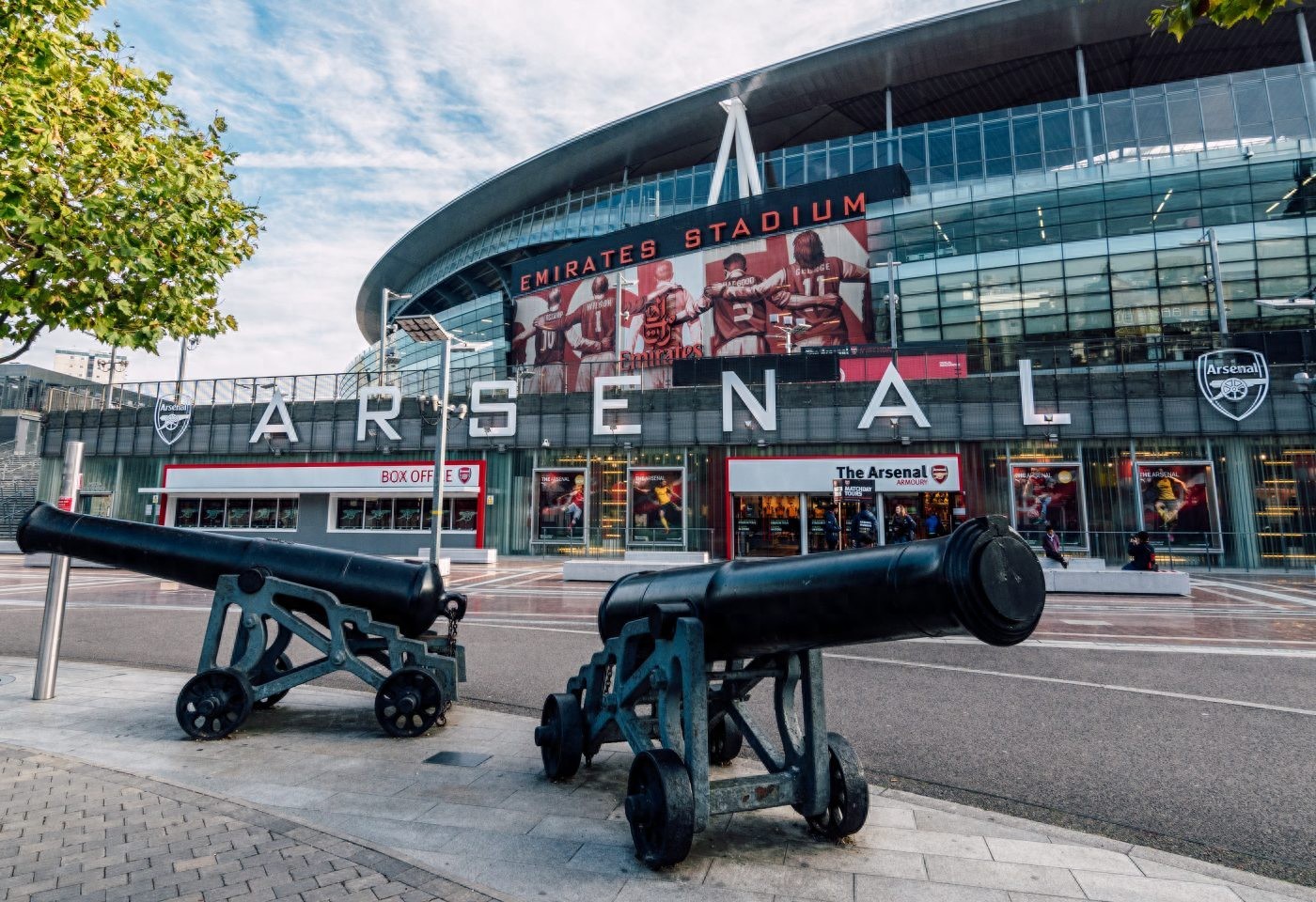The Grand Stadium, Arsenal’s Survival Logic

Written by Han Bing As the new stadium plan in Milan was finally finalized, Arsenal’s idea to expand the Emirates Stadium also appeared in the press, drawing significant attention in football circles. Arsenal was the first big European club in the 21st century to construct a modern 60,000-seat stadium, which doubled their matchday income and allowed them to match Manchester United and surpass other Premier League top four teams strategically. However, the heavy debt burden from building the Emirates Stadium has long constrained Arsenal’s survival tied to this massive arena.
It wasn’t until 2014, thanks to the surge in Premier League broadcasting revenue, that Arsenal’s stadium debt was significantly reduced. When Arsenal was finally able to invest heavily in transfers to boost their championship competitiveness in recent years, the Emirates Stadium began to lag behind newer, larger, and multifunctional stadiums. The Kroenke family had no choice but to follow the trend and initiate the Emirates expansion plan.
For Arsenal, this means the underlying logic of "living off the stadium" for the past 20 years seems set to continue even longer…
Twenty Years of the Emirates: A Treasury and a Prison
Manchester United’s dominance in the Premier League during the 1990s under Ferguson was fundamentally driven by the increasing matchday revenue from Old Trafford’s expansions, which gave the Red Devils a capital edge over rivals. As early as 1997, shortly after arriving in England, Wenger began exploring the possibility of having a large-capacity stadium. When Arsenal’s new stadium was finally approved in 2001, Wenger called it "the greatest decision in Arsenal’s history" since the board appointed Chapman as manager in the 1920s. Yet, this “greatest decision” deeply tied Arsenal’s 21st-century survival to the new stadium. While it doubled matchday income, it also brought huge debts and a prolonged period of financial austerity.
In 2006, the 60,000-seat Emirates Stadium opened, costing only €450 million to build—just 40% of what Tottenham’s new stadium cost 13 years later. However, two-thirds of that was financed by loans, saddling Arsenal with heavy debt. Matchday revenue stabilized above €100 million per season, but with debts exceeding €300 million, Arsenal had to issue bonds to ease financial pressure. Before the 2014 leap in Premier League broadcast income, Arsenal’s survival strategy was prioritizing debt repayment over squad investment. In the early 21st century, Arsenal only spent over €50 million in three seasons and only broke the €100 million mark in summer 2014.
The pandemic’s empty stadiums hit Arsenal’s matchday income especially hard, forcing them to refinance and take low-interest short-term loans to cover cash flow gaps. The Emirates Stadium has had a dual survival effect on Arsenal in the 21st century: behind the €100 million annual income lies a heavy debt burden that directly impacts stadium competitiveness. Before moving to the Emirates in 2006, Arsenal finished in the Premier League’s top two for eight consecutive seasons. Since then, they have only achieved a top-two finish once in 16 seasons, with maintaining Champions League qualification becoming the primary sporting goal.
In the 2015/16 season, Arsenal returned to the Premier League’s top two after 11 years. Thanks to the exponential growth in Premier League TV broadcasting revenue, Arsenal’s annual transfer spending also rose above €100 million. However, other Premier League giants had already reaped returns from continuous transfer investments, leaving Arsenal stuck in a six-season Champions League drought. Over the past five seasons, Arsenal’s total transfer spending reached €990 million, but finishing runners-up for three consecutive seasons came at the cost of five straight seasons of losses totaling over €360 million.
As France’s L'Équipe pointed out, recent Premier League rivals’ investments in stadium expansions have eroded Arsenal’s matchday revenue advantage, reducing its share in club income. In less than 20 years, the benefits Arsenal gained from the Emirates Stadium expansion have essentially vanished. With TV broadcast revenue unable to widen the gap, expanding the stadium to significantly increase matchday income is Arsenal’s shortcut to regaining capital superiority.
Past and Future, Is the Gunners’ Fate Bound to the Stadium?
By early next year, when Manchester City’s home expansion is completed, Arsenal’s stadium capacity will drop from second in the Premier League 19 years ago to sixth, falling behind London rivals Tottenham and West Ham. On one hand, Arsenal has up to 100,000 fans waiting to buy season tickets; on the other, stadium bonds and pandemic financing debts remain unpaid. Expanding the Emirates to at least 70,000 seats will require at least €580 million in investment, nearly doubling Arsenal’s current annual debt repayment of at least €15 million—an enormous long-term expenditure.
Arsenal fans hope the stadium expansion will finish by summer 2028 and that the comprehensive multifunctional upgrade will increase season ticket revenue by over 50%. But the process is more complicated than expected: raising the stadium roof requires additional local council permits. Expansion also means increasing the capacity of nearby public transport hubs, which will be a major planning hurdle. The Daily Telegraph claims that gaining planning permission from Islington Council could take up to five years, and during construction, Arsenal would have to relocate to Wembley Stadium for at least two seasons—an option fans are reluctant to accept.
Even so, expanding the Emirates Stadium is the only path for Arsenal’s future revival. The competitive landscape is tougher than 25 years ago. Rivals Tottenham have fully surpassed Arsenal in stadium revenue development, Liverpool and Manchester City are catching up fast, and even Manchester United has launched plans for a 100,000-seat stadium. Arsenal’s revival inside the stadium is on the rise, but the unchanged capacity from 25 years ago remains the biggest obstacle to the club’s competitive advantage.
Of course, the nearly €600 million expansion cost will inevitably continue to burden Arsenal financially, noticeably affecting the club’s finances over the next 5 to 10 years. But for Arsenal, this has been their survival mode throughout the 21st century. Unlike before, soaring Premier League TV revenues will largely ease the pressure from expansion costs. Additionally, Arsenal’s rapidly growing commercial income will help reduce the burden, and the Kroenke family, now full owners, will naturally employ other financial strategies to relieve club stress. If Arteta’s team can maintain steady Champions League participation or even win major trophies during this period, the true revival centered around the Emirates Stadium will come even sooner.


Wonderfulshortvideo
User PlaymakerHub has posted a video.








 Links
Links
 Contact
Contact
 App
App


